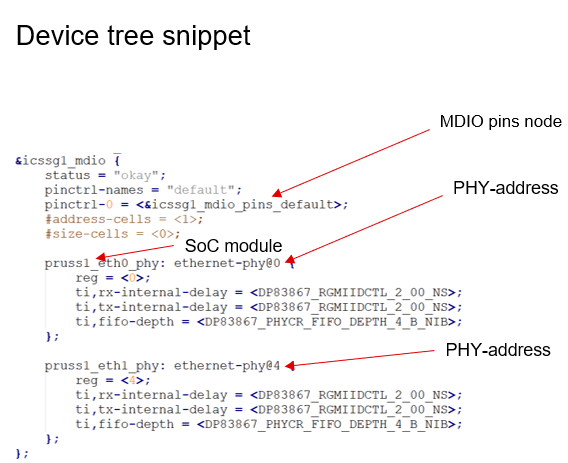SNLA431 January 2024 DP83TC812R-Q1 , DP83TC812S-Q1
- 1
- Trademarks
- 1Preface
- Notational Conventions
- 2Related Documentation
- 3Support Resources
-
4Troubleshooting the PHY Application
- 4.1 Schematic and Layout Checklist
- 4.2 Verify Successful Power-up of PHY
- 4.3 Peripheral Pin Checks
- 4.4 Register Dump Comparison
- 4.5 Verifying Strap Configurations
- 4.6 Check the MDI Signal
- 4.7 Link Up Failed Common Issues
- 4.8 Signal Quality Check
- 4.9 Power Up Timing
- 4.10 Loopback Testing
- 4.11 Debugging the MAC Interface
- 4.12 Verify Open Alliance PMA Compliance
- 4.13 Tools and References
- 5Conclusion
4.13.4 Software and Driver Debug on Linux
The two essential components required for the PHY to function on a Linux system are the device tree and driver file, for which the DP83TC812 drivers can be found here. Below is a sample format of what a device tree looks like along with labeling to clarify what each line means. The DP83867_PHYCR_FIFO_DEPTH_4_B_NIB and DP83867_RGMIIDCTL_2_00_NS variables are shared among all TI PHYs.
 Figure 4-16 Ethernet PHY Device Tree
Sample
Figure 4-16 Ethernet PHY Device Tree
Sample